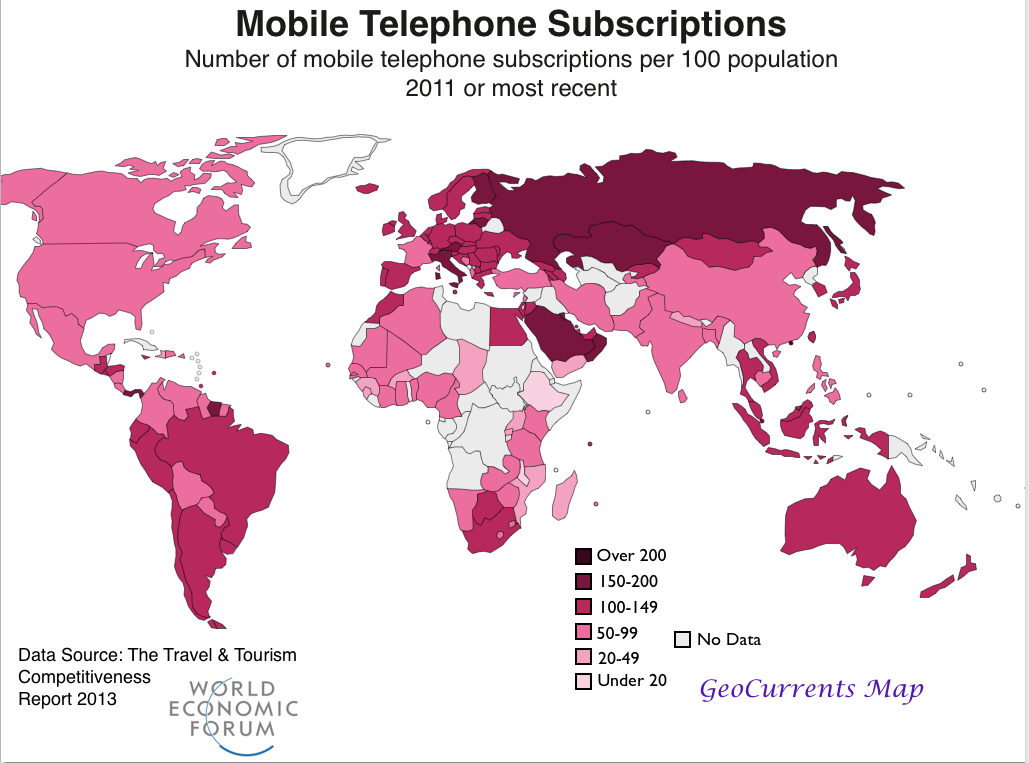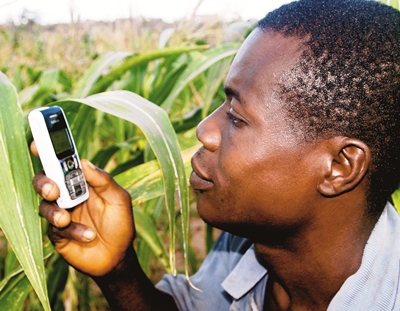- Mobile surveys are becoming ubiquitous in the 21st century, with findings showing they save both time and money over traditional paper surveys.
- The TextIt service helps you build and distribute conversational surveys soley through SMS.
- Establishing more consistent communication and providing valuable information to rural communities over SMS can aid practitioners looking to involve local people in conservation efforts.
TextIt, which launched in late 2013, has offered a possible counterpart to traditional data collection techniques used around the world. To collect information on communities and their relationship with the surrounding forest and wildlife, researchers have typically turned to standard, periodic surveys. This involves training and sending enumerators to the field, a process that can be costly and logistically challenging.
In 2014, The Nature Conservancy published a study examining the costs and effectiveness of paper versus electronic surveys, based on their own survey work. The results were clear. From the paper:
In the comparison, the cost per completed interview for the tablet-based survey was 74% less than the paper-based survey average, and the average time per interview question for the tablet-based survey was 46% less than the paper-based survey average. The cost saving came primarily from less need for data cleaning and lower enumerator fees. The time saving came primarily from faster data entry.
In short, the electronic surveys saved time and money, and made the forms easier to fill out for others.
Mobile data collection got its start when PDAs began to proliferate, and applications like CyberTracker took advantage of the touch display and ability to use pictures, rather than words, to pose questions and collect knowledge from illiterate communities. Since then, various mobile and cell-based apps have been created that allow a user to send surveys out to the field and get the results back instantly over the internet.
One great example of these open-source survey apps is the Open Data Kit software package that digitizes surveys and uploads them to the cloud. This simplifies the process of creating and giving questionnaires and analyzing the collected data. It was developed at the University of Washington as part of a suite of tools called Change, which bridge the communication gap between remote communities and aid workers. ODK runs on most versions of the Android operating system (phones and tablets) and allows a user to customize a survey to fit the project’s needs. Researchers can also design the surveys to include more complicated questions and show images of the animals, plants, or objects in question. Because everything happens on a device, it eliminates the need for data entry and processing — the arduous process of copying data from a sheet of paper into excel.
However, as we’ve talked about before on WildTech, the penetration of smartphones needed to run this type of survey remains low in many developing countries, while feature phones (non-smart phones) have become one of the fastest growing technologies across the globe. Even in poorer countries, such as Mali and Zimbabwe, there are 68 and 72 phone subscriptions per 100 people respectively.

TextIt takes advantage of this rapidly increasing connectivity to deliver surveys and information through simple SMS exchanges. No smart phone or tablet required.
TextIt works the way people are used to communicating by simulating a conversation, called a “flow,” to ask questions based on the answers people feed into it. When a user sends a text, TextIt works through those questions and responds. The service also keeps track of where the users are based on the longitude and latitude generated by the incoming text. The exchange can end up sounding like a regular conversation over SMS because each question is based on the previous answer; the service can even supply information on demand.
“Since you build these interactions, what we call flows, visually, they are really easy to understand. You just use arrows and boxes to define the flow and that feels natural to users. The neat part is just how much flexibility there is. We give you the ability to send emails, or call a web service, or send a message to someone else, anywhere in a flow, and people are coming up with pretty neat uses because of that flexibility,” explained Nicholas Pottier of TextIt, in an interview with TechMoran.
Introducing TextIt
According to Pottier, TextIt’s cloud-based service, intuitive flow designer and integration with apps like Twilio give it a competitive advantage over other similar SMS services, such as FrontlineSMS, Trext, and TeleRivet.
Based in Kigali, Rawanda, the TextIt team is focused on deploying their system across East Africa, but the service has quickly grown global, helping businesses collect information and even run car washes in the United States. The company’s founders say they were inspired by previous contract work with non-profit organizations that needed help building SMS surveys. Their service now targets small- to medium-sized NGOs that can’t afford to build and run long-term surveys, and it takes its cut from charging users a monthly fee for the service based on the volume of messages one sends.

The ability to connect with geographically isolated communities on a daily basis and gather information on crops, livestock health, and wildlife issues using simple SMS surveys offers a real opportunity for local NGOs to monitor priority conservation areas. Over time, the platform can help build relationships with communities through daily contact and by providing real value to their lives.
This was the case in 2013 when Indiana University’s Ostrom Workshop and Princeton University’s Department of Civil and Environmental Engineering developed the Crop Failure Early Warning System in Kenya and Zambia. The SMS-based system is powered by TextIt, and collects information from farmers throughout the growing season on crop health, weather and other environmental factors to put together crop yield projections. Instead of once-yearly, in-person surveys which failed to capture more granular changes over the course of a growing season, the project gets updates from a 5-10 question survey every few months.

This technique isn’t without its drawbacks. Building an end-user community (the people taking a survey) takes time, both to create a representative sample size and to train those people on the app.
The crop project focused its training on younger family members at each farm, who could then teach others in the surrounding area. The group thinks that providing valuable information and continually explaining the benefits of the project is also important to keep response rates high.
While we have yet to see a conservation-specific project take advantage of TextIt, the services it provides could go a long way towards establishing more consistent communication with communities to collect and broadcast information about the wildlife and forests around them. Applications related to human-wildlife conflict, disease monitoring and illegal activity reporting could all be tied into SMS-based communication.
Have you had experience with ODK or TextIt? What did you think? Please share your thoughts in the comments below.
Or if you haven’t used it, what types of uses could you foresee for TextIt and similar SMS-based survey tools?
